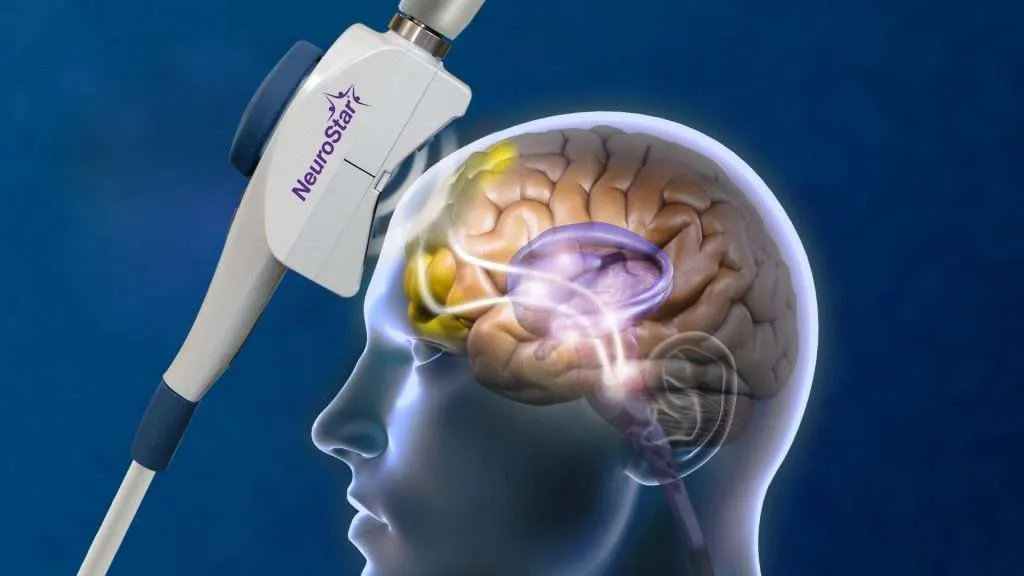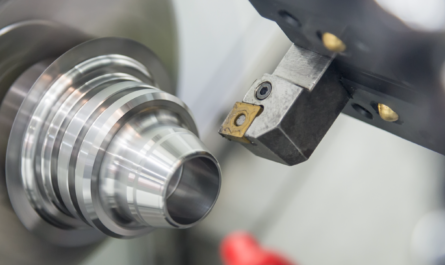Transcranial magnetic stimulation or TMS is a non-invasive procedure that uses magnetic fields to stimulate nerve cells in the brain and treat various neurological and psychiatric conditions. TMS is an FDA approved treatment for major depressive disorder and is being widely researched for other mental health conditions as well.
What is Transcranial Magnetic Stimulation?
Transcranial magnetic stimulation works on the principle of electromagnetic induction. A magnetic coil placed near the scalp produces brief magnetic pulses that pass unimpeded through the scalp and skull to stimulate brain cells in targeted regions. The magnetic field produced by the coil changes direction rapidly inducing electric currents in the brain. These currents are thought to depolarize neurons and induce activity changes in targeted brain regions.
TMS aims to activate or inhibit parts of the brain by producing these electric currents without any surgical intervention or anesthesia. It was approved by the FDA for treatment-resistant depression in 2008 and has since gained widespread recognition as a safe alternative to ECT or medications for depressive disorders.
How does TMS work?
TMS treatment involves placing a magnetic coil on the patient’s scalp at specific sites on the brain depending on the condition being treated. For depression, the coil is usually placed over the left prefrontal cortex area, which is believed to control mood and emotions.
Repeated magnetic pulses are delivered through the coil in sessions lasting around 30 minutes, a few times every week. Each magnetic pulse lasts around 1 milliseconds but the cumulative effect over the treatment course modulates the activity in targeted brain areas. Researchers believe that the stimulation of certain cortical regions can normalize their functions and alleviate symptoms.
For depression, repeated stimulation of the prefrontal cortex activates this key mood-regulating area and also indirectly inhibits overactive limbic structures like the amygdala believed to drive depressive symptoms. A full course of TMS treatment usually lasts 4-6 weeks with significant improvement seen in over 30% of treatment-resistant depression patients.
Advantages of TMS over other treatments
TMS offers several advantages as a treatment option compared to antidepressant medications and ECT. As it is non-invasive and does not require anesthesia, TMS has very minimal side effects like mild headaches which are temporary. Medications on the other hand can cause numerous side effects from sexual dysfunction to weight changes.
ECT also involves anesthesia and associated medical risks like brief confusion and memory lapses. TMS also does not interfere with medication and can be combined with antidepressants. Patients do not need to be hospitalized and can resume daily functions immediately after treatment. This makes it a more convenient treatment choice with better safety and tolerability profiles.
Effectiveness of TMS for various conditions
Beyond depression, Transcranial Magnetic Stimulator Market shows promise for other psychiatric and neurological conditions as well by precisely targeting different brain areas:
– Schizophrenia – TMS to the left temporoparietal cortex shows benefits in reducing positive symptoms
– Bipolar Disorder – Low-frequency TMS to the right prefrontal cortex helps alleviate manic symptoms
– Obsessive Compulsive Disorder – High-frequency stimulation of the supplementary motor area reduces compulsive behaviors.
– Migraine and chronic pain – TMS to motor cortex regions eases pain levels.
– Stroke rehabilitation – Low-frequency TMS to unaffected motor areas induces changes and improves recovery of function.
Ongoing research is exploring TMS applications in various conditions involving different targeted stimulation protocols. As a non-invasive neuromodulation technique, TMS has immense potential and holds promise for revolutionizing mental healthcare
Further refinement of TMS coil and stimulator designs along with more focaled multisite and navigated stimulation techniques will make it an even more precise targeted brain intervention. Real-time neuronavigational systems integrated with magnetic resonance images enable customized targeting of deeper and smaller brain regions beyond the prefrontal cortex. Research is also developing repetitive TMS devices for home use bringing therapy directly to patients.
Combined with other modalities like tDCS and therapies, TMS can yield enhanced outcomes. Its ability to modulate specific neurotransmitter systems through repetitive stimulation patterns offers new possibilities. Future iterations may include closed-loop feedback systems automatically adapting stimulation parameters based on neural responses. All these advances will cement TMS as the premiere non-invasive neuromodulation technique, transforming mental health treatment.
About Author - Vaagisha Singh
Vaagisha brings over three years of expertise as a content editor in the market research domain. Originally a creative writer, she discovered her passion for editing, combining her flair for writing with a meticulous eye for detail. Her ability to craft and refine compelling content makes her an invaluable asset in delivering polished and engaging write-ups. LinkedIn

 by
by 


